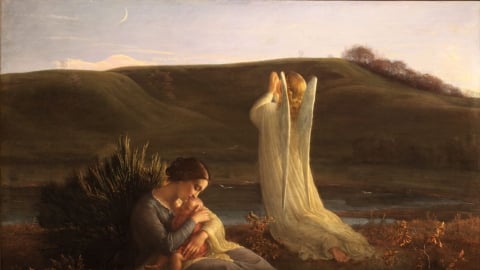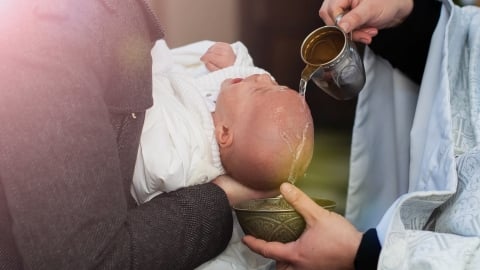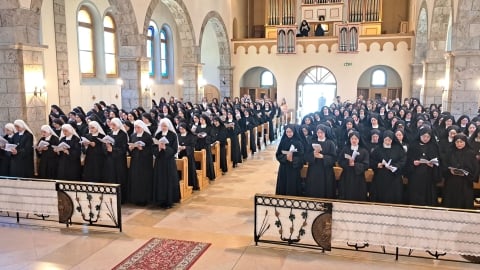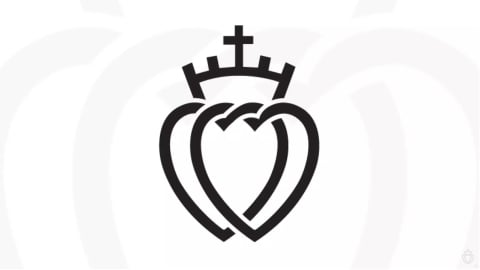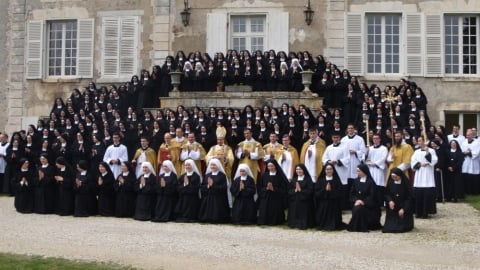The Didache: Internal Order and the End Times
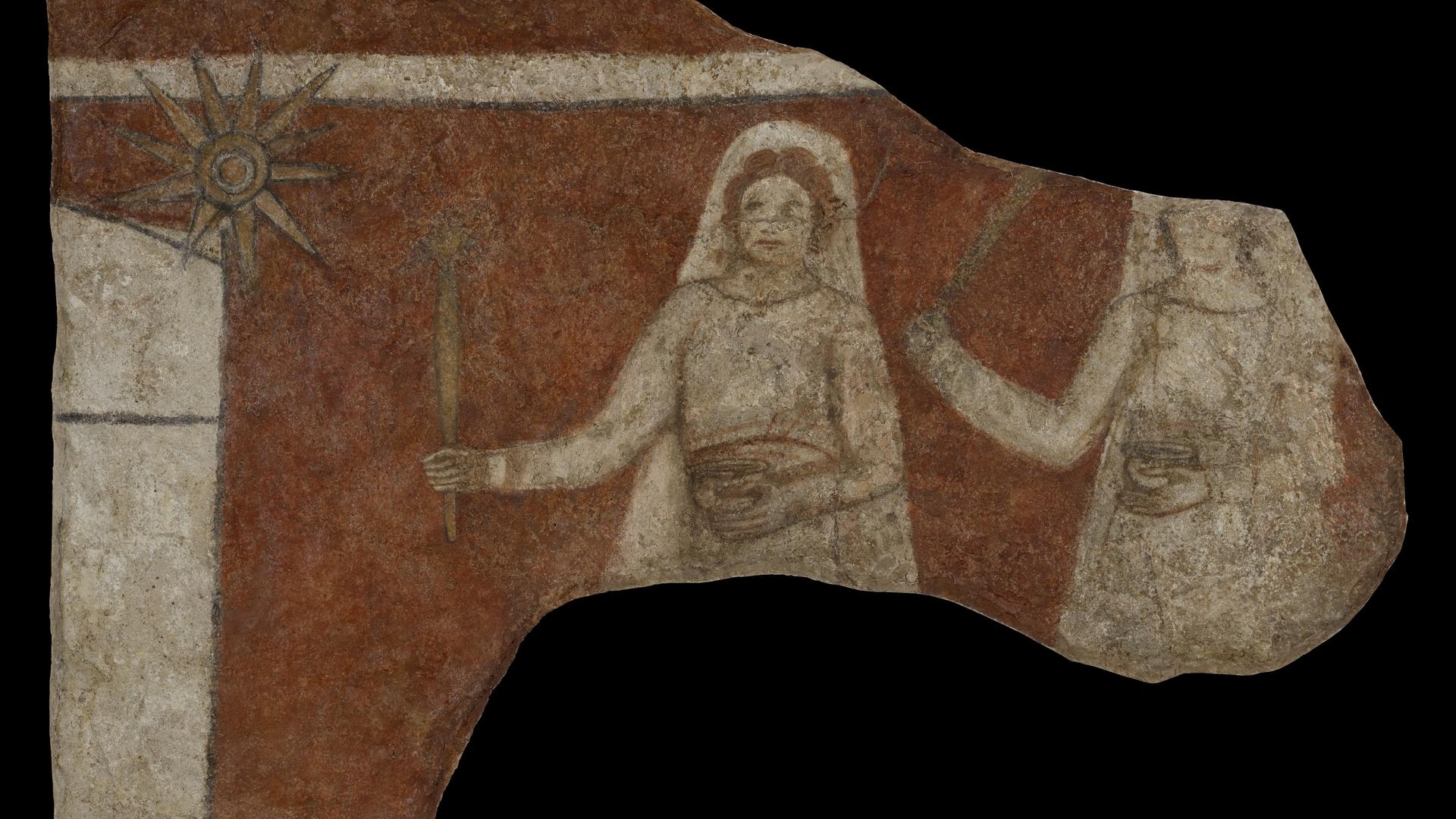
"Procession of Women" Portion of Fresco from Earliest-Known Christian Church at Dura-Europos, 3rd c.
The Didache, sometimes called “The Lord's Teaching Through the Twelve Apostles to the Nations” in reference to its opening line, is a first-century document governing Church order and is one of the oldest catechetical texts in Christendom. This fifth and final installment on the Didache reviews the text’s prescriptions for internal church order and its eschatological conclusion.
Read Part 4: "The Didache: Teachers, Apostles, and Prophets"
Read Part 3: "The Didache: Baptism, Prayer, and the Eucharist"
Read Part 2: "The Didache: The Two Ways"
Read Part 1: "The Didache: Introduction, Origin, and Rediscovery"
Church Worship and Order
The 14th Chapter of the Didache, though brief, sets forth guidelines for Sunday worship.
On the Lord's Day of the Lord come together, break bread and hold Eucharist, after confessing your transgressions that your offering may be pure; but let none who has a quarrel with his fellow join in your meeting until they be reconciled, that your sacrifice be not defiled. For this is that which was spoken by the Lord, “In every place and time offer me a pure sacrifice, for I am a great king,” saith the Lord, “and my name is wonderful among the heathen.”
In the context of the early Church, confession and reconciliation were public rather than private. That is, rather than confessing only to a priest, members of the community were expected to announce their transgressions and seek forgiveness from fellow members before receiving sacramental absolution, especially those they had harmed directly. This admonition for public confession also appears earlier in the catechetical portion of the text: “In the congregation thou shalt confess thy transgressions, and thou shalt not betake thyself to prayer with an evil conscience. This is the way of life” (4:14). While the Church prudently developed a more formal manner for confession and priestly absolution over subsequent centuries, the concern that the faithful approach public prayer, particularly the Eucharist, in a pure manner—without the stain of serious sin—was paramount from the earliest days of Christianity.
In the following chapter, the Didache returns to internal order, first with respect to bishops and deacons.
Appoint therefore for yourselves bishops and deacons worthy of the Lord, meek men, and not lovers of money, and truthful and approved, for they also minister to you the ministry of the prophets and teachers. Therefore, do not despise them, for they are your honorable men together with the prophets and teachers.
As discussed previously, the Didache was composed at a time when the Church’s ministerial structure made room for both iterant preachers (teachers and prophets) and permanent clergy (deacons and bishops). Though the relationship between the two “sets” of ministers is not spelled out in detail, it appears that the bishops and deacons were entrusted with the task of permanently disseminating the message of traveling instructors for the good of the faithful. As the Church continued to grow and bishops came to oversee larger territories, they were joined by priests who, being vested with holy orders, conferred the sacraments to the faithful. This ordinary structure remains in place to this day.
Chapter 15 concludes with the following:
And reprove one another not in wrath but in peace as you find in the Gospel, and let none speak with any who has done a wrong to his neighbor, nor let him hear a word from you until he repents. But your prayers and alms and all your acts perform as ye find in the Gospel of our Lord.
Like in Chapter 14, this section places a premium on members of the Christian community being reconciled to one another, going so far as to prohibit communication with a wrongdoer “until he repents.” This prohibition is not absolute, however, as the text also contemplates Christians correcting (“reproving”) one another, albeit “not in wrath but in peace.” Filial correction, therefore, is permissible, but those who refuse correction and repentance are in effect excluded from the community. Whether this exclusion represents formal excommunication is unclear, though in time the Church would establish canonical rules for this severest of ecclesiastical punishments.
In keeping with the overarching theme of the Didache discussed in earlier installments in this series, these instructions are intended to direct Christians along the way of life rather than the way of death. No man lives without sin save Christ and the Blessed Virgin, but those who obstinately refuse repentance forego eternal life in favor of everlasting darkness.
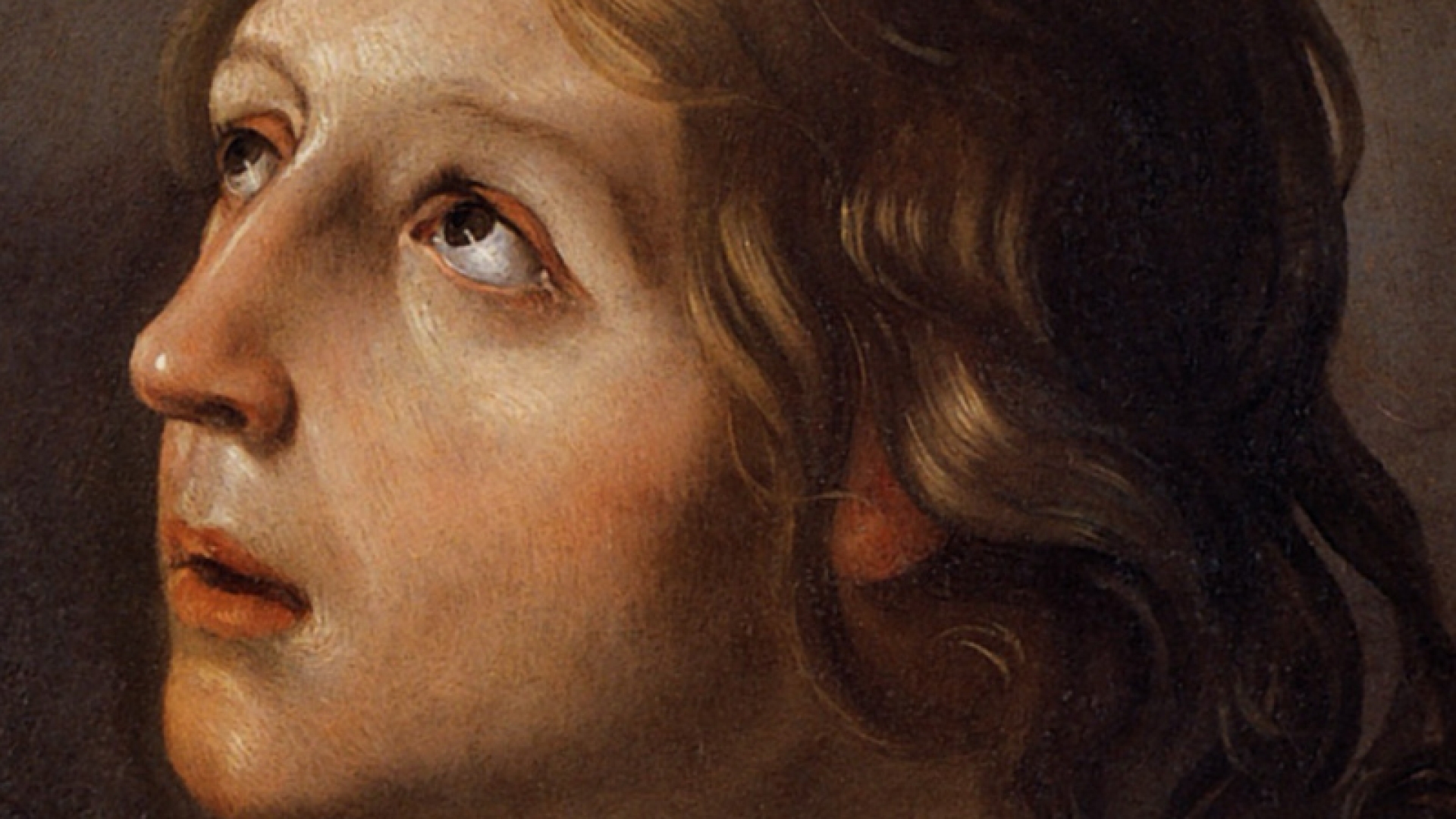
St. John the Evangelist (detail) by Guido Reni, 1621
The End Times
For scholars, the 16th and final Chapter of the Didache presents several challenges, not the least of which being that the text which has come down to us appears incomplete despite being one of the longer chapters in the work. The first part is made up of an exhortation to vigilance.
Watch over your life: let your lamps be not quenched and your loins be not ungirded, but be ready, for ye know not the hour in which our Lord cometh. But be frequently gathered together seeking the things which are profitable for your souls, for the whole time of your faith shall not profit you except ye be found perfect at the last time; for in the last days the false prophets and the corrupters shall be multiplied, and the sheep shall be turned into wolves, and love shall changed to hate; for as lawlessness increases they shall hate one another and persecute and betray, and then shall appear the deceiver of the world as a son of God, and shall do signs and wonders and the earth shall be given over into his hands and he shall commit iniquities which have never been since the world began.
Portions of this text have close parallels in the New Testament, particularly the warning that “ye know not the hour in which our Lord cometh” (cf. Mt. 24:44, Lk. 12:40, & Mk. 13:33). Latin Catholics accustomed to praying the traditional office of compline may also hear echoes of the following scriptural text when reading the above: “Be sober and watch: because your adversary the devil, as a roaring lion, goeth about seeking whom he may devour. Whom resist ye, strong in faith” (1 Pet. 5:8-9). The warning to “let your lamps be not quenched and your loins be not ungirded” recalls a directive in Luke’s Gospel: “Let your loins be girt, and lamps burning in your hands” (12:35). Like other parallels recalled earlier in this series, it is difficult to say whether there is a direct literary relationship between the Didache and certain New Testament texts as opposed to common teachings held by the earliest Christian communities.
As this section continues to survey what is to come in the end times, other parallels present themselves from the Gospel of Matthew, including the appearance of false prophets (7:15 & 24:11); sheep becoming (or being) wolves (7:15); love turning to hate (24:12); and an increase in lawlessness (24:10 & 12). This list of travails culminates in the arrival of the antichrist, “the deceiver of the world” who, through “signs and wonders,” has the appearance of “a son of God.” This is the ultimate deception, worse than false prophets or mutual enmity sown within the Church. The iniquities of the antichrist, which appear to include a direct persecution of the Church, will be of a like “which have never been since the world began.”
From this great trial will come final victory, though many will not endure.
Then shall the creation of mankind come to the fiery trial, and many shall be offended and be lost, but they who endure in their faith shall be saved by the curse itself. And then shall appear the signs of the truth. First the sign spread out in heaven, then the sign of the sound of the trumpet, and thirdly the resurrection of the dead: but not of all the dead, but as it was said, “The Lord shall come and all his saints with him.” Then shall the world see the Lord coming on the clouds of heaven.
This section’s colorful language may have been lifted in part from several apocryphal texts, though it is equally probable that it reflects metaphoric language commonly understood by early Christians. The “sign spread out in heaven,” for instance, likely refers to the Cross while the coming of the Lord “on the clouds of heaven” is an expression found in both Jewish and Christian pseudographical literature. In one of the few theological passages in the text, the Didache’s author speaks of Christ’s second coming with “all his saints with him,” that is, those who have already been saved, before the general resurrection (and judgment) of the dead. When speaking of the many who will be lost as opposed to saved, the text’s cryptic reference to those “saved by the curse itself” remains a puzzle for contemporary interpreters, with some opining that the “curse” refers to the curse of death true believers will be saved from while others read “the curse” as referring to Christ who Himself was “cursed” by the world. Without further textual elaboration, however, this line’s sure meaning seems lost to history.
Following the declaration that the “world [will] see the Lord coming on the clouds of heaven,” most scholars believe there was more text to follow that is no longer extant. The nearly complete 11th century Didache manuscript discovered by Metropolitan Philotheos Bryennios (discussed in Part 1 of this series) leaves a partial blank page at the end of the text, indicating that there was more text to be copied in. Moreover, the 4th century Constitutiones Apostolorum (“Apostolic Constitutions”), which most believe draws in part on the Didache, contains a fuller eschatological conclusion after referencing Christ’s arrival “above the clouds.” It stands to reason that the Didache originally provided more details concerning the final judgment and the eternal destination of those who proceeded along the way of life rather than the way of death.
Conclusion
At least 19 centuries separate us from the Didache’s composition. And while much has changed in the world, this early Christian work still witnesses to the foundational truth that in life there are two ways which all human beings must choose. The decision to follow Christ is never easy; the world will always erect barriers to Christian living and without notice turn its malice on those who wish to remain faithful. Just as the early Church was beset by not only persecution from without, but corruption and deception within, so too is the Church today. Prayer, repentance, fasting, almsgiving, and good order are as equally indispensable for the Catholic life now as they were for the earliest generation of believers. The size, organization, and discipline of the Church herself may not be the same as it once was, but none of that obviates the demand for Catholics to struggle daily, persevering over the trials of today while remaining ever prepared for the tribulation to come.
sspx.org - 11/28/2023
